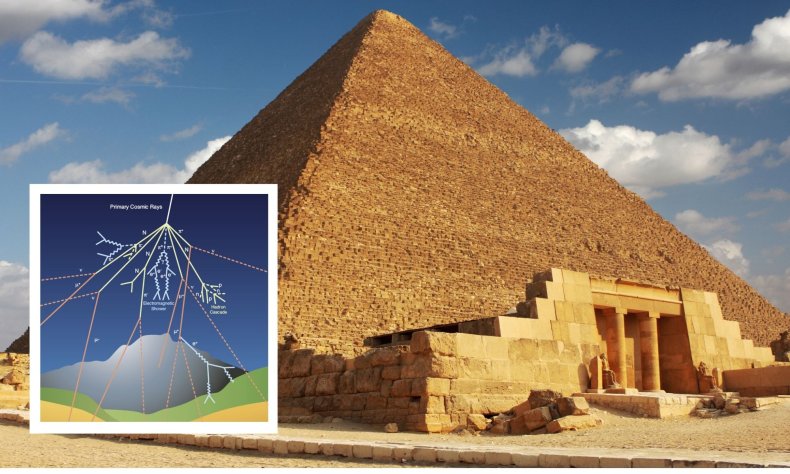How Cosmic Rays From Space Could Reveal the Secrets of the Pyramids
Researchers have used cosmic rays from deep space to create a powerful probe to investigate the hidden mysteries of the Great Pyramid of Giza.
The team, including Fermilab High Energy Physics (HEP) researcher, Alan D. Bross, will use the method, similar to a technique first adopted by Luiz Alvarez in the 1950s, to investigate mysterious voids in the pyramid.
The cosmic-ray muon imaging method used presents a very powerful tool that can see deep into the Great Pyramid's structure and allows researchers to search for "hidden" chambers or voids.
In particular, this team will attempt to discover if the larger of two voids revealed by previous scans could be a passageway that leads to the burial chamber of the pharaoh Khufu.
The technique used by the researchers hinges on powerful cosmic rays from deep space that regularly bombard Earth. When these energetic, charged particles that have travelled from interplanetary, interstellar, or even intergalactic space, strike particles like oxygen or nitrogen in the upper atmosphere they trigger a chain reaction.
This chain reaction creates a cascade of particles that rain down to Earth's surface. Among these are muons, particles similar to electrons but with a mass around 200 times greater. Even though these particles are short-lived, the fact that they travel at relativistic speeds means they can reach sea-level before decaying to electrons and neutrinos.
Muons are slowed down or scattered when they encounter heavy atoms, which means that by placing muon detectors around the Great Pyramid the team can build a 3D picture of the interior of that structure.
Andrea Giammanco, a researcher at the Université Catholique de Louvain's Center for Cosmology, Particle Physics, and Phenomenology in Belgium, told Elsevier journal Reviews in Physics: "Muons come for free, they are a perfectly safe form of radiation, and they are naturally produced and ubiquitous. There is no need for expensive accelerators, or for dangerous natural radiation sources.
"Muon imaging creates links between otherwise disconnected areas of science, such as particle physics, geology, and archaeology," said Giammanco, the author of a review of scanning methods that use atmospheric muons.
In a paper detailing the latest muon scans of the Great Pyramid, the authors explain plans for a telescope system with upwards of 100 times the sensitivity of the equipment recently used at the Great Pyramid. This will allow muons to be imaged from nearly all angles and will, for the first time, produce a true tomographic image of such a large structure.
In addition to revealing the secrets of this individual pyramid, considered one of the wonders of the ancient world, the system could also teach archaeologists more about the building techniques used in Egypt between 2575 and 2465 BCE.

-- Sent from my Linux system.

No comments:
Post a Comment